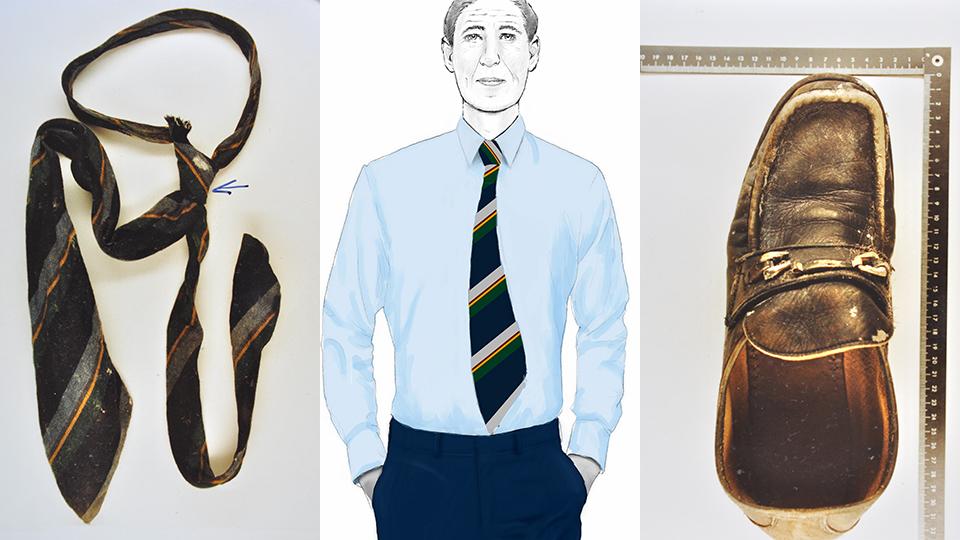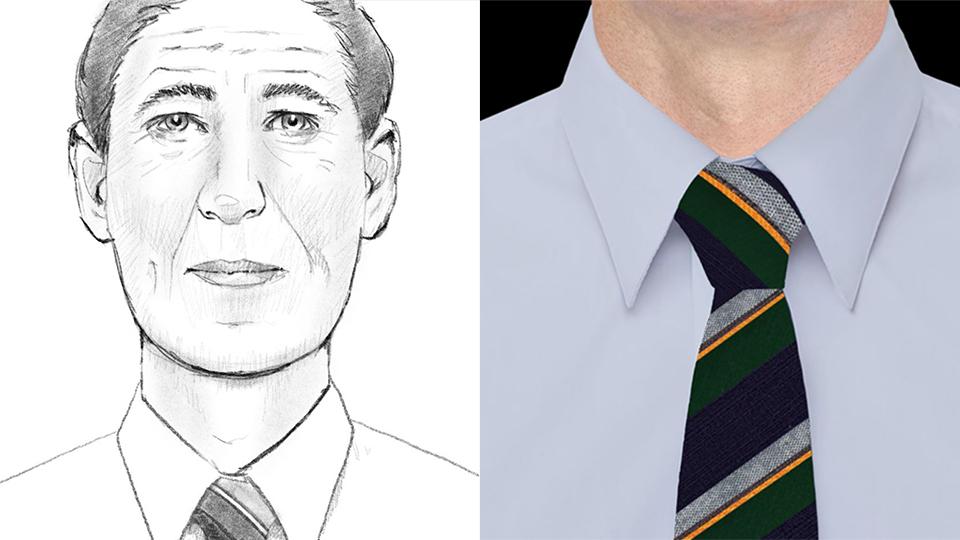On 11 July 1994, the body of a middle-aged man believed to be British was recovered by a police boat in the North Sea, West of the Island Heligoland near Germany.
The body showed injuries on the head and upper body, and there was evidence of him having been weighted down, suggesting intentional harm. Previous attempts to identify the man dubbed ‘the gentleman’ by German police have been unsuccessful and the case remains open.
Staffordshire University students began work on the case as part of the International Cold Case Project and have continued to help with the appeal for information.
The team revisited evidence and recommended modern forensic methods to help police identify the unknown man, the duration of time he was in the water as well as local references to the clothes he was wearing.
MSc Forensic Science student Pooja Prasoona Raja, who has been leading the student team of advisors, explained: “We pieced together recovered items of clothing and recommended that the police produce a facial reconstruction. This is now being used as part of the appeal to provide a picture of what the man might have looked like.
“When we began work on the case I never imagined it would come this far. To work with police investigators and prosecutors is a fantastic opportunity and it feels really good to know that we are helping the investigation.”

An artist's impression of the unidentified man, and the striped wool tie and Church & Co Ltd leather shoes he was wearing when removed from the North Sea
The new appeal for information has been launched by Wilhelmshaven investigators, the Oldenburg public prosecutor's office, and the Lower Saxony Police Academy so that the man can be named, loved ones informed, and potential perpetrators brought to justice.
Their campaign is being supported in the UK by the charity Locate International, who are working with Staffordshire University, Goldsmiths and Plymouth Marjon University to appeal to the public in the hope that memories can be jogged and new lines of investigation opened.
Staffordshire University Professor Caroline Sturdy Colls has been mentoring the students and providing specialist advice on forensic issues.
She said: “We feel honoured to do this kind of work and bring new technologies and new approaches to cases that have gone cold and remain unsolved. There is the old saying that time is a healer but for families of a loved one who is missing, not having those answers does not get easier.
“The new leads in the case and the appeal were a result of the tireless efforts of our students and this is a really important step in the investigation. We hope this new information will jog people’s memories and reach someone who can help to identify the man.”
The full public appeal, including a list of key 1993-1994 ‘memory jogger’ events can be found on Locate International’s case page. Anyone with information related to the North Sea Case should contact Locate via their website
German language information and contact details can be found on the website of the Polizeidirektion Oldenburg
The unidentified man

An artist's impression of the unidentified man and a digital reconstruction of the shirt and tie he was wearing (Hew Morrison © 2022)
At the time of his death, the unidentified man was probably 45 to 50 years of age, so was likely born during the mid to late 1940s. He was unusually tall at almost 6ft 5 (197cm) and of slim build, probably weighing between 11 and 12 stone or 70-75kg when alive.
While facial reconstruction experts have managed to generate a sketched likeness, due to the condition of the body when it was pulled from the water, his hair colour, hair length and eye colour are unknown.
There are indications that the man was from an English-speaking area so may have been British or had a close relationship with Britain: His black or navy leather loafers were a size 11 made by relatively expensive English shoe manufacturer Church & Co Ltd. The shoes had been re-soled with Philipps soles and had replacement heels manufactured by Dinky Heel PLC, Bristol, with the inscription I.T.S. Jubilee and a stylised crown.
He was wearing a 100% wool tie with a base colour of dark blue, and with grey, brown, orange and green diagonal stripes. The tie’s label included instructions in English and French to dry clean only. His navy trousers were made in France and he was wearing a long-sleeved, light blue shirt with collar.
It is not known how he entered the water. His body may have been thrown off a ship off Heligoland or entered from Heligoland and moved out to sea.